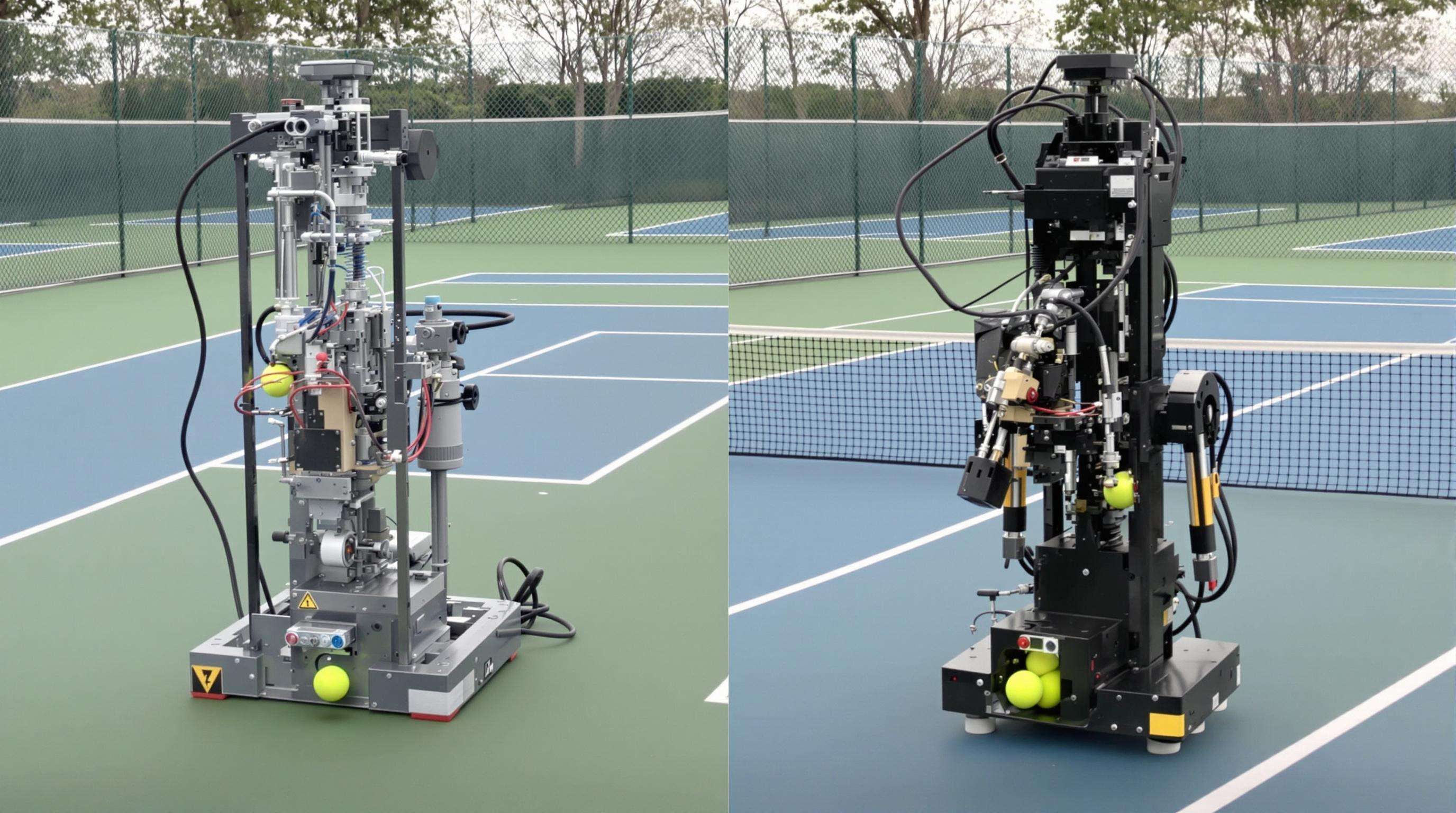Modern high-performance machines offer unparalleled speed flexibility, delivering balls at 20-130 mph to simulate everything from baseline rallies to professional serves. A recent 2022 propulsion system study found adaptive speed controls improve drill effectiveness by 65% compared to static machines, particularly when replicating match-specific scenarios requiring sudden pace changes.
Advanced composite materials enable brush-up techniques to create 3,200 RPM rotations—equivalent to elite kick serves—with ±2% accuracy. Coaches report 40% faster spin recognition skill development when players train with this RPM range daily.
The 12-angle trajectory matrix covers every ATP-approved shot arc, from defensive lobs (70°) to approach shots (22°). This precision allows players to practice returns like Nadal-style reverse forehands and Federer-esque slice backhands within the same session.
Self-calibrating motors shift positions in 0.8 seconds, creating chaotic spray patterns or precise strike zones. In random mode, machines alter horizontal placement every 3-7 shots using tournament-grade algorithms.

Modern training systems use artificial intelligence to dynamically adjust ball velocity, spin, and trajectory based on real-time performance data.
Embedded IMUs and cameras track footwork, swing mechanics, and positioning. Athletes receive instant visual feedback with heatmaps highlighting optimal and inefficient movement zones.
Machine learning reduces ball speed by 12-18% when compromised footwork is detected, maintaining rally continuity. A 2024 sports technology study found this adaptive approach improves drill completion rates by 34%.
Neural networks analyze performance histories to identify subtle stroke deterioration patterns, enabling targeted technical interventions.
A six-month trial with 12 professionals showed 22% greater stroke consistency in weak zones while cutting session durations by 19 minutes through AI-optimized sequencing.
Gyroscopic stabilization and infrared tracking ensure shots land within 2 cm of targets. Elite players improve stroke consistency 27% faster with automated systems.
AI auto-configures drills in 90 seconds, allowing 10-15 daily training segments—up from 4-5 manually. Real-time analytics save 40 weekly practice minutes otherwise spent on video review.

Static machines repeat identical strikes, while robotic systems adjust spin (300-3,200 RPM) and angles (0°-50°) mid-session, creating 37% more realistic scenarios.
Professional-grade systems (starting at $7,900) offer AI-driven adjustments that help coaching centers recoup costs within 18-24 months via reduced labor and higher retention.
Facilities using robotic systems report $28,000 annual staffing savings and $41,500 additional revenue from extended court hours, with athletes improving serve accuracy 22% faster.
Lidar sensors enable 360-degree ball delivery, a 23% improvement over fixed systems. The integration of industrial robotics principles allows real-time recalibration between shots.
Vacuum-powered collection and magnetic sorting enable continuous 150-ball drills with 8-second reloads, tripling effective practice time.
Entry-level machines ($1,500–$3,000) suit practice but lack tournament-level adaptability. Professional systems ($6,000–$8,000+) provide AI-driven opponent-matching scenarios.
AC units are ideal for facilities, while lithium-ion battery models cut long-term costs by 40% compared to lead-acid alternatives. Dual-power systems add 15–20% to initial prices but minimize downtime.
High-performance machines can deliver balls at speeds ranging from 20-130 mph, simulating various types of play.
These machines can produce 3,200 RPM rotations with an accuracy of ±2%.
This technology helps dynamically adjust ball velocity, spin, and trajectory, based on the player's real-time performance data, leading to improved training outcomes.
Robotic systems provide adaptive programming, allowing more realistic scenarios compared to the fixed delivery of traditional machines.

Copyright © 2024 by Changsha Cheongar Tech Co., Ltd. Privacy policy